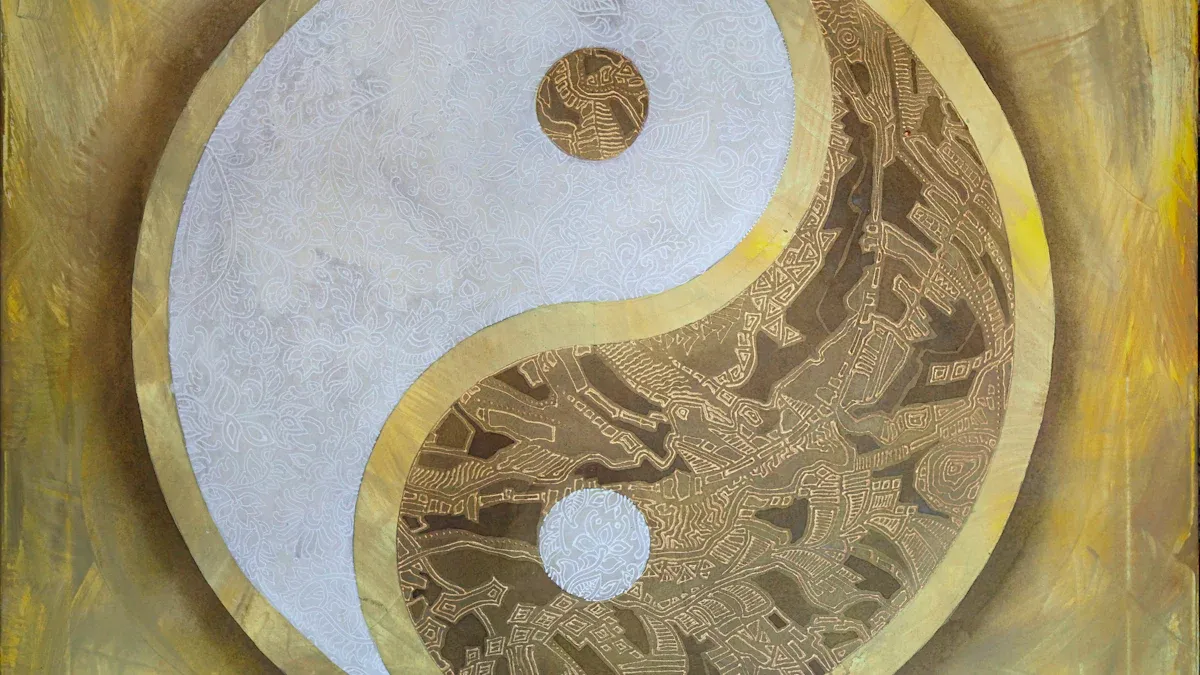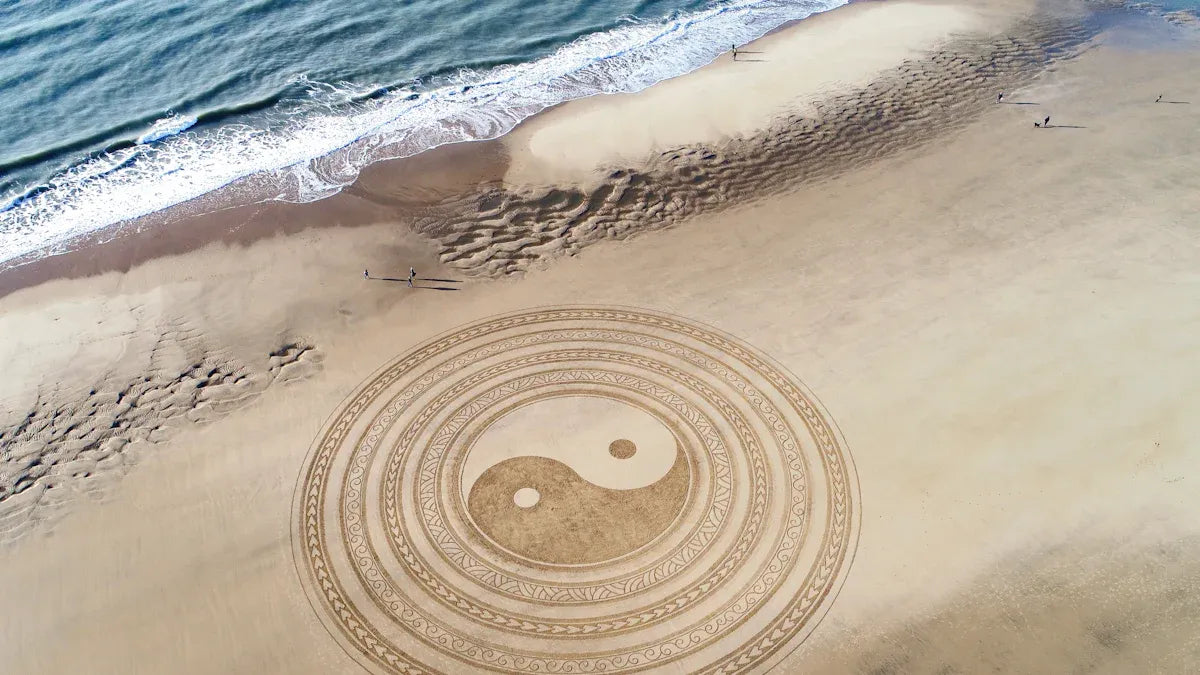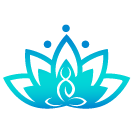When you hear the question, what is yin and yang, think of two forces that work together in everything. What is yin and yang? You can see it as the idea that opposite things, like light and dark, make the world balanced. When you ask yourself what is yin and yang, you find that it means harmony comes from these differences working as a team.
Key Takeaways
Yin and yang are two opposite forces that work together to create balance in everything around us.
The yin yang symbol shows how each side contains a little of the other, teaching us that nothing is all one thing.
Balance between yin and yang helps us find harmony in nature, health, emotions, and relationships.
Yin and yang remind us that opposites depend on each other and work as a team, not as enemies.
You can use yin and yang in daily life by balancing rest and activity, warm and cool foods, and quiet and movement to stay healthy and happy.
What Is Yin and Yang
Core Meaning
When you explore what is yin and yang, you discover a core idea from Chinese philosophy. This concept describes two principles of nature that work together as complementary forces. You can think of yinyang as a way to explain how everything in the universe connects and interacts. Yin and yang theory teaches that nothing stands alone. Every part of life has an opposite, and these opposites depend on each other to create balance.
Scholars describe yinyang as a holistic and dynamic worldview. The yin and yang symbol, called the great ultimate, shows a circle divided into black and white halves. Each half contains a small dot of the opposite color. This design means that nothing is completely one-sided. You always find a bit of yin in yang and a bit of yang in yin. The principle of yin and yang shapes how you see change, harmony, and the flow of life. Ancient texts like the I Ching explain that these two principles guide the universe and influence everything from the weather to your emotions.
Modern research connects yinyang to real-life situations. For example, studies show that harmony and conflict in relationships reflect yin and yang. You might notice genuine harmony or even superficial peace, just as you see both real and hidden conflict. These patterns match the yin and yang concept, showing that balance comes from the interaction of different forces. In workplaces, researchers found that sharing and hiding knowledge are not just opposites. They work together, much like yin and yang, to create a healthy environment.
You can see yinyang as a guide for understanding how the world works. It helps you notice the balance between rest and activity, quiet and noise, or even happiness and sadness.
Opposites
Yin and yang always involve opposites. You find examples everywhere: night and day, cold and hot, soft and hard, or feminine and masculine. The yin and yang philosophy does not treat one side as better than the other. Instead, it shows that both sides are equal and necessary. The yin and yang theory explains that these opposites create harmony when they interact.
Yin stands for qualities like darkness, coolness, softness, and rest.
Yang stands for brightness, warmth, strength, and movement.
You might think of yinyang as a dance between two partners. Each one needs the other to move smoothly. In eastern philosophy, this balance is key to health, nature, and even your mood. The yin and yang concept teaches that you cannot have one without the other. For example, you only know what light is because you have seen darkness.
Research in psychology and medicine supports this idea. Scientists found that accepting both positive and negative feelings helps you grow. In traditional Chinese medicine, doctors use the principle of yin and yang to treat illness by restoring balance. Even in modern healthcare, experts see value in combining different approaches, just as yinyang suggests.
The philosophy behind yinyang reminds you that opposites do not fight each other. They work together as parts of a whole. When you understand this, you can see harmony in every part of life.
Yinyang and Duality
Balance
You can see duality everywhere in life. Yinyang shows you that two opposite forces exist together, like night and day or rest and activity. This idea of cosmic duality helps you understand that nothing stands alone. Each part needs its opposite to create a whole. The balance of yin and yang means you find harmony when both sides work together. You do not need to choose one over the other. Instead, you learn to appreciate both.
A study in environmental science shows how the balance of yin and yang works in real life. Researchers used yinyang ideas to manage resources better. They found that balancing different needs, like using and saving resources, helps reduce waste and supports sustainability. This example shows that yinyang is not just a theory. You can use it to solve problems and make better choices.
When you look for balance, you create a sense of unity in your life. You notice how both sides, even if they seem opposite, help each other.
Interdependence
Yinyang teaches you that duality is not about conflict. It is about coexistence and unity. Each side depends on the other. You cannot have light without darkness or movement without stillness. This interdependence creates a dynamic flow, where yin and yang shift and change places.
Researchers in Taiwan studied how people find harmony in relationships. They found six types of harmony and conflict, each showing a different way yin and yang interact.
People often keep peace on the surface, even if there is hidden conflict. This pattern matches the yinyang idea that balance comes from both visible and hidden forces.
The study showed that these types of harmony connect strongly with how people act, proving that yinyang shapes real-life interactions.
You can see cosmic duality in your friendships, family, and even at school. When you accept both sides, you build stronger connections.
Yinyang reminds you that duality leads to balance, and balance brings harmony. You can use this wisdom to find peace in your daily life.
Yin Yang Symbol

Symbol Meaning
You see the yin yang symbol almost everywhere, from art to clothing. This symbol, also called taiji, shows how two opposite forces work together. The yin yang symbol looks like a circle split into two swirling shapes, one black and one white. Each side holds a small dot of the opposite color. This design teaches you that nothing is completely one thing. Even in darkness, you find a bit of light, and in light, you find a bit of darkness.
The yin yang symbol stands for balance and unity. You can use it to understand how life works. The black side, yin, means earth, quiet, and rest. The white side, yang, means sky, energy, and action. Both sides need each other. You cannot have day without night or activity without rest. The yin yang symbol reminds you that harmony comes from these opposites working together.
Here is a table that shows what each part of the yin yang symbol represents:
Aspect |
Description |
|---|---|
Complementary Forces |
Yin and Yang make up all parts of life, like earth and sky, dark and light. |
Symbolism of Yin |
Earth, quiet, darkness, rest, valleys, streams, even numbers. |
Symbolism of Yang |
Sky, energy, light, action, mountains, odd numbers. |
Philosophical Connection |
The yin yang symbol shows the universe’s balance and flow. |
The yin yang symbol helps you see that balance is not about being the same. It is about working together.
Visual Elements
When you look at the yin yang symbol, you notice the swirling shapes. These shapes show movement and change. The S-curve in the middle means that yin and yang always flow into each other. The small dots inside each half show that nothing is pure yin or pure yang. Each side carries a seed of the other.
Scientists have even found the yin yang symbol in nature. In a physics lab, researchers used special cameras to capture the movement of tiny particles. The image they made looked just like the yin yang symbol. This shows you that the symbol is not just art. It matches real patterns in the world.
The yin yang symbol comes from ancient ways of tracking the sun and shadows.
People used it to mark the change between day and night, summer and winter.
You also see the yin yang symbol in Chinese medicine and Feng Shui, where it helps people find balance in health and their homes.
The yin yang symbol teaches you to look for unity in opposites. You can use this lesson every day, whether you are solving problems or finding peace.
Yin and Yang in Life

Health and Nature
You see yin and yang in your body and the world around you every day. In health, these two forces help explain how your body stays balanced. For example, traditional chinese medicine uses yin and yang to understand why you feel tired or full of energy. Yin stands for rest, coolness, and nourishment. Yang means activity, warmth, and movement. When you feel sick, it often means your yin and yang are out of balance.
Doctors and scientists use yin and yang to study how your body reacts to medicine. Some medicines help at low doses but can harm at high doses. This pattern matches the yin and yang idea of balance. In traditional chinese medicine, foods also have yin or yang qualities. Watermelon and cucumber cool your body and add moisture, showing yin energy. Ginger and garlic warm you up, showing yang energy. Eating a mix of these foods helps you stay healthy.
Nature also follows yin and yang. Day and night, summer and winter, rain and sunshine all show how these forces work together. Ancient doctors noticed that diseases often follow the seasons. They used yin and yang to predict and treat illnesses by watching changes in weather and climate. This approach helps you see how your health connects to the world around you.
When you pay attention to the balance of yin and yang in your life, you support your body’s natural healing.
Personality and Daily Life
Yin and yang shape your personality and daily choices. Some people act more like yin: calm, careful, and quiet. Others show more yang: active, outgoing, and bold. Scientists have found that these traits match with Western ideas about personality. For example:
People with more yang traits often seek new things and take risks.
People with more yin traits avoid harm and prefer peace and order.
Tests like the Sasang Personality Questionnaire measure these differences.
Your mood and well-being also depend on yin and yang. Traditional chinese medicine teaches that your emotions link to your organs and health. If you feel too much anger or sadness, your yin and yang can become unbalanced, leading to health problems. Studies show that when you find harmony between your feelings and actions, you feel happier and healthier.
You can use yin and yang in daily life by noticing when you need rest (yin) or action (yang). If you feel stressed, try quiet time or gentle exercise. If you feel sluggish, try moving or spending time in the sun. Balancing these choices helps you stay well.
Every day, you make small choices that reflect yin and yang. By finding balance, you improve your health and happiness.
You have learned that yin and yang show how opposites work together. The symbol teaches you about balance and unity. Many studies highlight the importance of harmony and connection in life:
Researchers found that peace of mind links to harmony.
Global surveys show that balance and harmony improve well-being.
Experts say the symbol of yin and yang helps people understand happiness and relationships.
Notice the symbol in your daily life. When you look for balance, you find harmony everywhere.
FAQ
What does yin and yang mean in simple words?
Yin and yang show how opposite things work together. You see this in light and dark, hot and cold, or rest and activity. These opposites help create balance in your life.
Can something be only yin or only yang?
Everything has both yin and yang. You never find something that is 100% yin or 100% yang. Each side always contains a little of the other.
How can you use yin and yang in daily life?
You can look for balance in your choices. For example, you rest after working hard or eat both warm and cool foods. This helps you feel healthy and happy.
Is the yin yang symbol religious?
The yin yang symbol comes from Chinese philosophy. People use it to show balance and harmony. You do not need to follow a religion to use or understand it.










